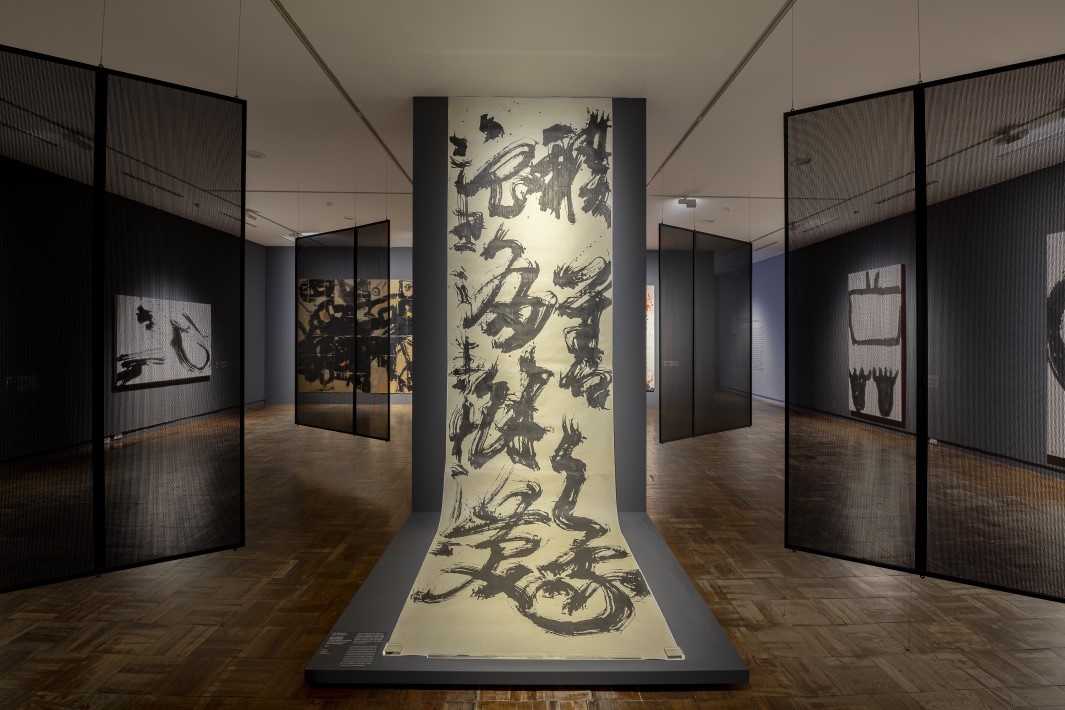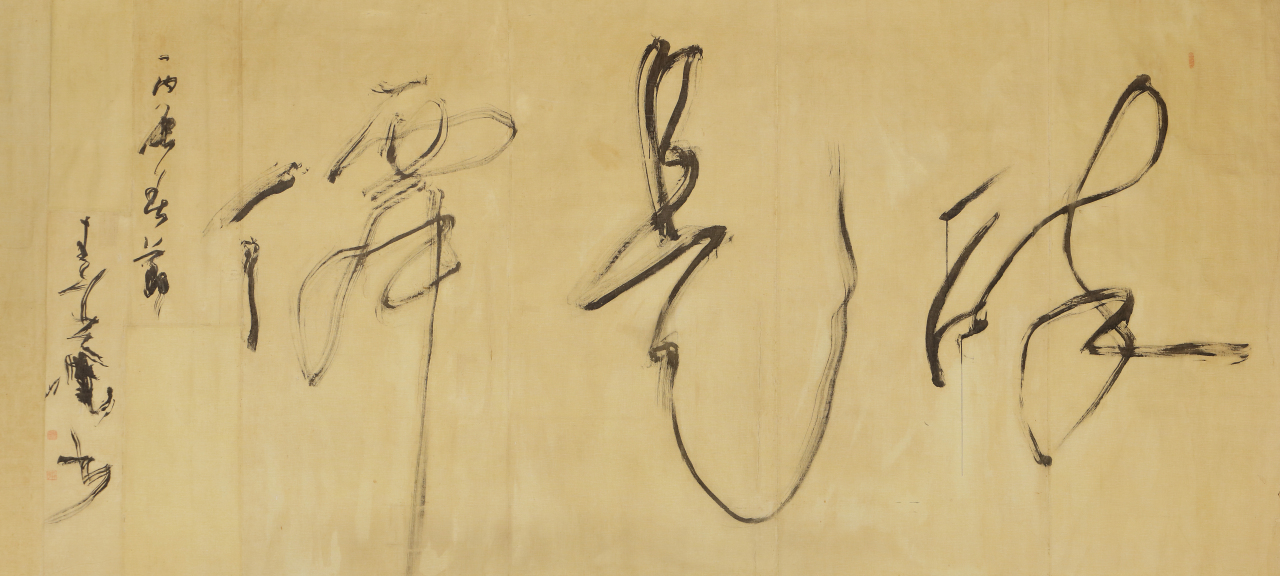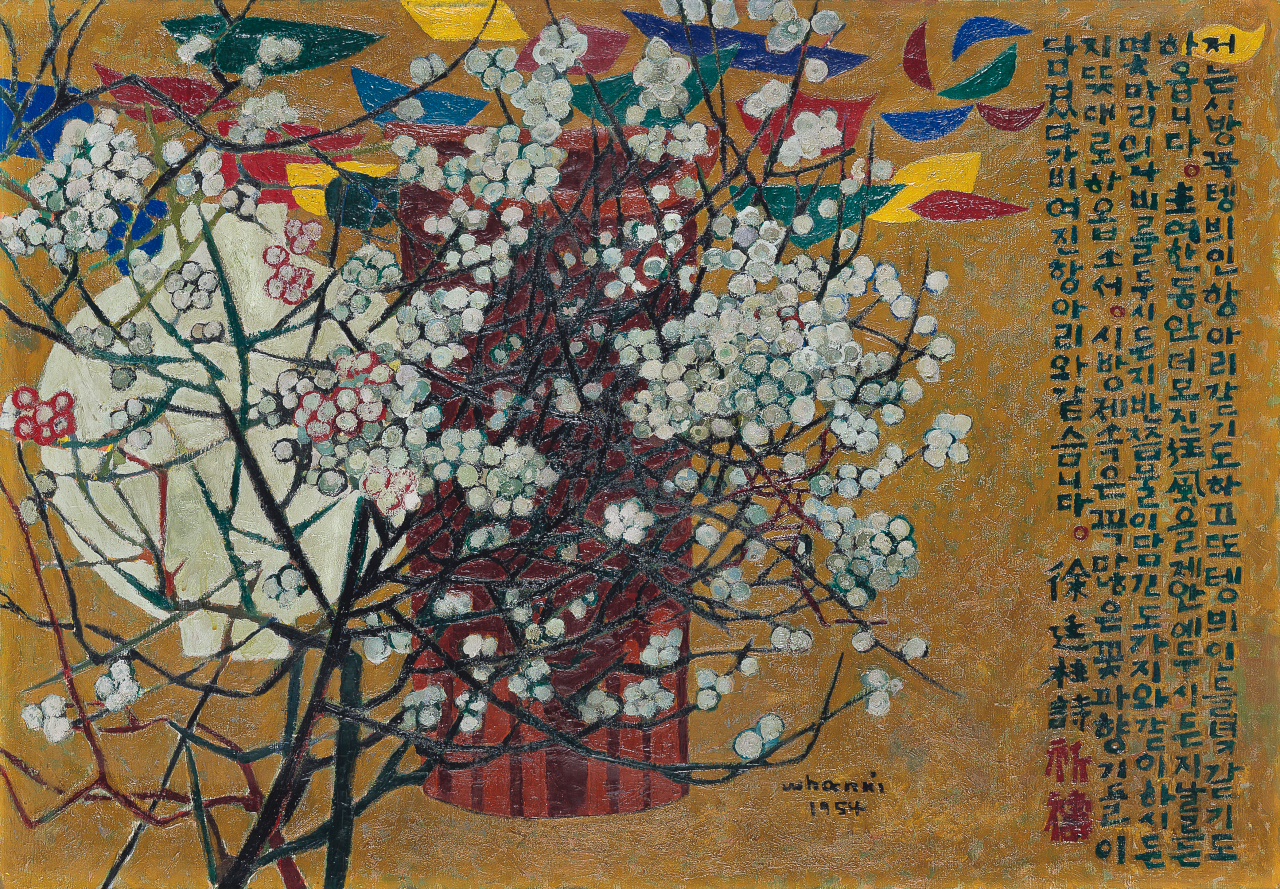Art of drawing letters: Beauty of calligraphy unveiled at MMCA for first time
By Park YunaPublished : March 31, 2020 - 15:31

The National Museum of Modern and Contemporary Art (MMCA) is hosting a calligraphy exhibition for the first time in its history, titled “The Modern and Contemporary Korean Writing,” aiming to show the beauty of calligraphy through the masterpieces from 1920s to modern era.
The exhibition was unveiled online Monday through livestreaming on MMCA YouTube channel with curator Bae Won-jung guiding through the artworks for 90 minutes. The exhibition was scheduled to open in March, but was put on hold as the museum temporarily shut down due to COVID-19 outbreak.
The museum is set to remain closed until Sunday, which is subject to change depending on the situation.
Calligraphy was once highly appreciated as art in the past as part of Joseon Fine Art Exhibition in the Japanese colonial era and the National Exhibition after the peninsula’ liberation from Japan. However, calligraphy always faced controversy whether it could be considered as art or simply viewed as letters.
The exhibition “The Modern and Contemporary Korean Writing,” however, aims to break the stereotype among younger generations that calligraphy is dull and show how it has played a significant role as art in Korea’s modern and contemporary art.
“In fact, the letters and paintings were ultimately viewed as one thing in Asia, which is different from the Western culture,” said Bae. “This is because we used a brush for letters and paintings while in the West they used a brush for paintings and a pen for writing.”
“So the paintings and letters have affected one another and rhythmic sense was considered important in letters. Many paintings in Korea have a poetry, while poetries also go with paintings,” she said.
The exhibition showcases 300 artworks from the Korean calligraphers from the modern and contemporary eras. They include calligraphy, engravings, paintings, sculptures, ceramics and media art. Also a total of 70 archival materials are being displayed.
The exhibition consists of four sections: “Calligraphy in Painting and Painting in Calligraphy,” “Calligraphy Mirrors the Calligrapher: The First Generation of Korean Modern and Contemporary Calligraphers,” “Calligraphy Revisited: Experimental and Unconventional Contemporary Calligraphy,” and “Designed Calligraphy in Everyday Life.”

The masterpiece of Calligrapher Hyeon Jung-wha (1907-1997), titled “When Drunk, I Become a Daoist Hermit,” demonstrates the beauty of lines. The three letters which means what the title implies look as if they are dancing like a crane.
“The letters are so beautiful, but if you see closer, the strokes are powerful and rhythmical, which is why the masterpiece is assessed as great art,” Bae said.
Another masterpiece by Kim Whan-ki (1913-1974) called “A Jar and a Poem” shows how the artist contributed to modernizing the literati painting by using oil instead of ink that was traditionally used for calligraphy and by using vivid colors in his work, Bae added.

“Kim’s work shows how the Korean poetry and the paintings of moon jar and plum flowers -- one of gracious plants that the literati enjoyed painting -- get along well in a modern way,” Bae said.
“Although visiting the museum is restricted due to the coronavirus pandemic, I hope the online tour of the calligraphy exhibition will provide some peace and a sense of hope to people,” said Youn Bummo, director of the MMCA.
By Park Yuna (yunapark@heraldcorp.com)







![[Graphic News] More Koreans say they plan long-distance trips this year](http://res.heraldm.com/phpwas/restmb_idxmake.php?idx=644&simg=/content/image/2024/04/17/20240417050828_0.gif&u=)
![[KH Explains] Hyundai's full hybrid edge to pay off amid slow transition to pure EVs](http://res.heraldm.com/phpwas/restmb_idxmake.php?idx=644&simg=/content/image/2024/04/18/20240418050645_0.jpg&u=20240419100350)






![[From the Scene] Monks, Buddhists hail return of remains of Buddhas](http://res.heraldm.com/phpwas/restmb_idxmake.php?idx=652&simg=/content/image/2024/04/19/20240419050617_0.jpg&u=20240419175937)

![[KH Explains] Hyundai's full hybrid edge to pay off amid slow transition to pure EVs](http://res.heraldm.com/phpwas/restmb_idxmake.php?idx=652&simg=/content/image/2024/04/18/20240418050645_0.jpg&u=20240419100350)

![[Today’s K-pop] Illit drops debut single remix](http://res.heraldm.com/phpwas/restmb_idxmake.php?idx=642&simg=/content/image/2024/04/19/20240419050612_0.jpg&u=)